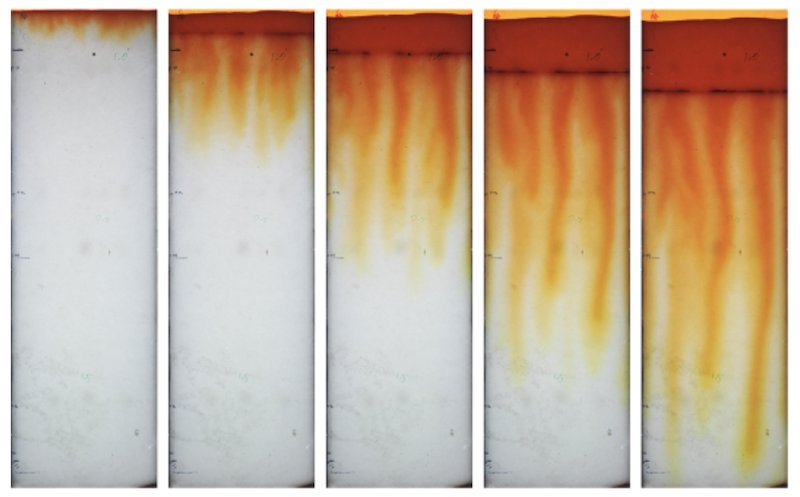In a number of natural or industrial settings, such as magmatic intrusions or geothermal power systems, subsurface porous rocks are flooded by fluid of a different density and composition than the original formation fluid. As the invading fluid migrates through the formation and reacts, its density and composition might change. In turn, this may lead to buoyancy-driven instabilities, which impact the speed at which the invading fluid advances.
PhD student Sam Clarke and professor Andy Woods have developed a series of new analogue laboratory experiments to investigate these instabilities and the progress of the reaction in a porous rock. To model the rock, they have used a bead pack containing a mixture of glass beads and salt powder, initially filled with clear, saturated salt solution. Over the course of an experiment, this solution is displaced from the top by an aqueous sugar solution (red), unsaturated in salt and initially less dense than the saturated salt solution.
As the sugar solution migrates down the pack, it dissolves the salt powder therein, producing a stable dissolution front. The sugar solution becomes increasingly saline, until its density exceeds that of the saturated salt solution, leading to convective instability in the cell.
Sam’s experiments show that as a result of this instability, the invading fluid can mix a significant distance into the formation, and may not flood the formation evenly, but in a finger regime, only partially saturating the formation.
This article has now been published by Physical Review Fluids, and is available here.
